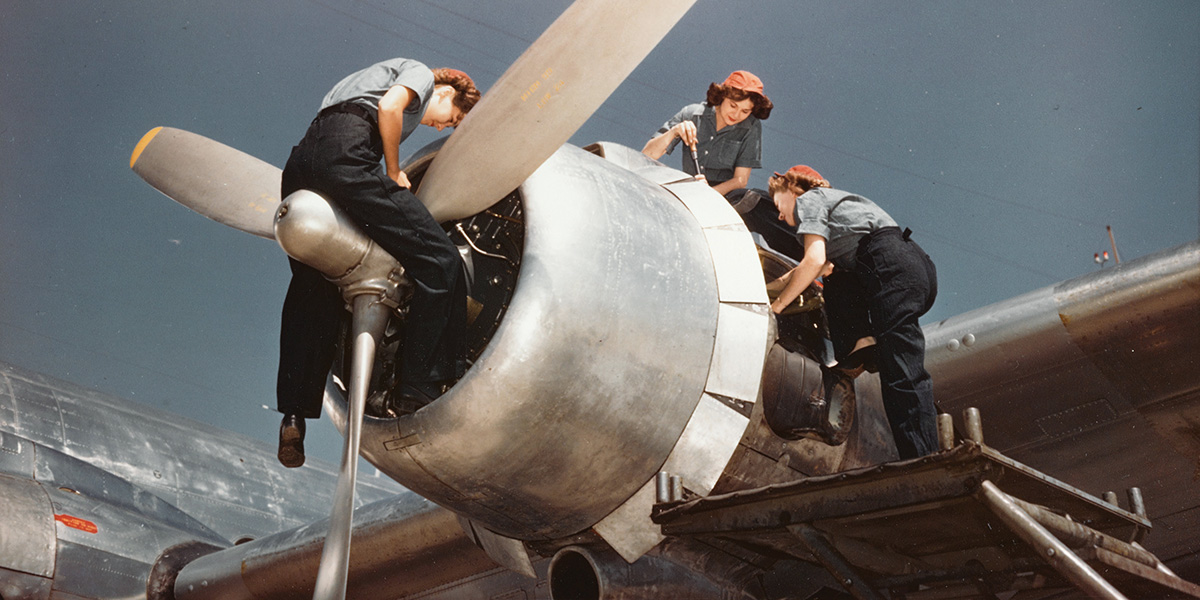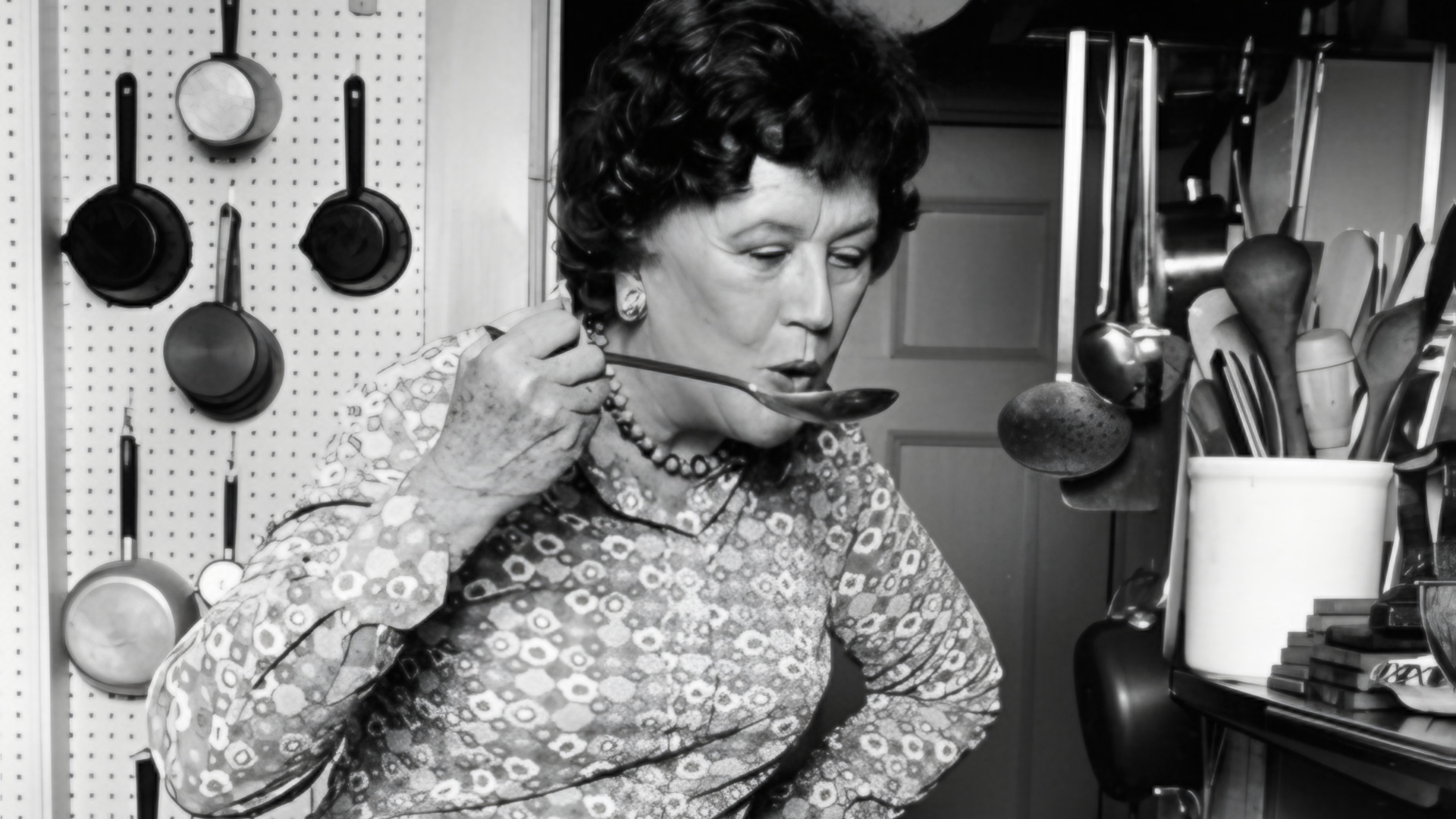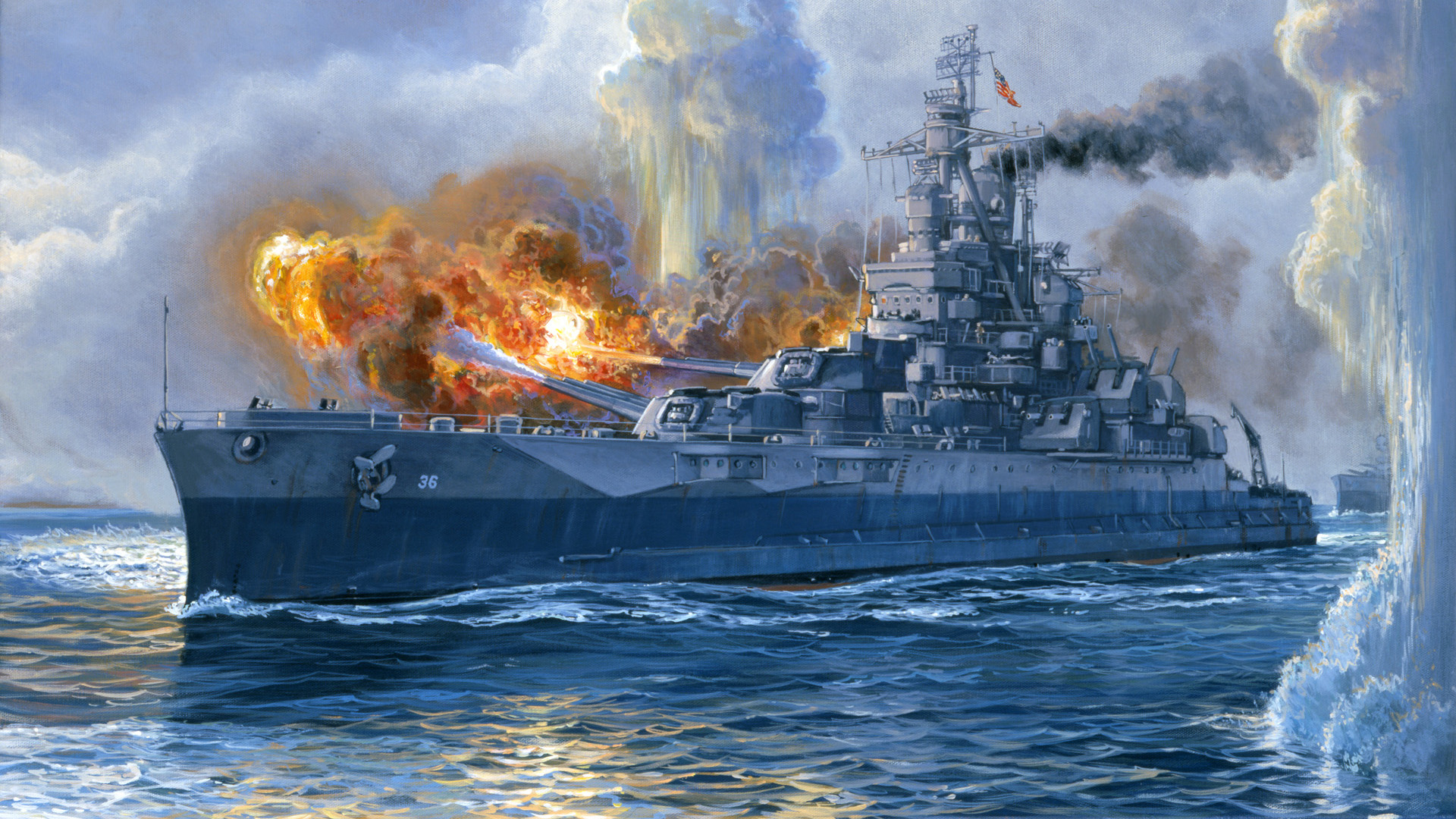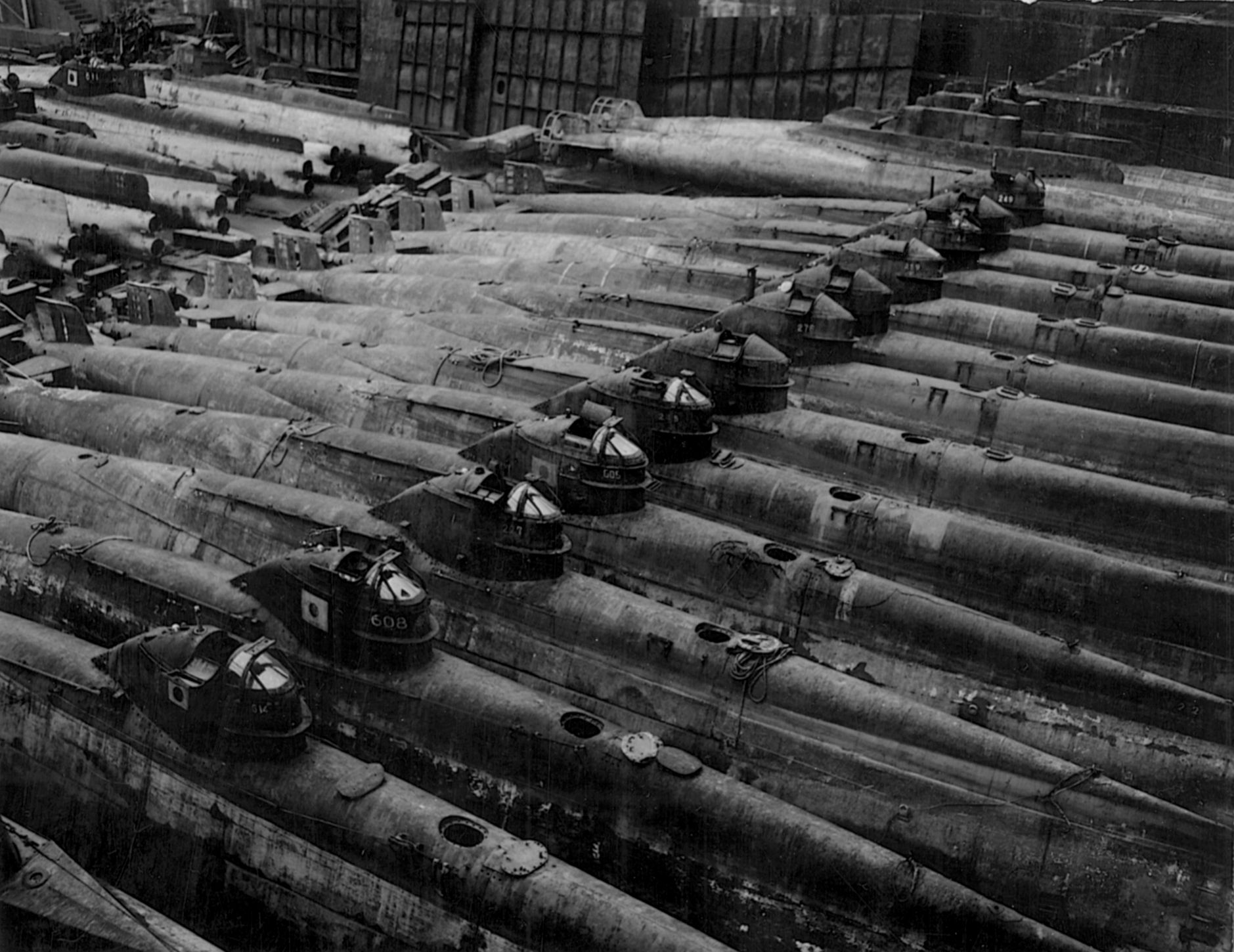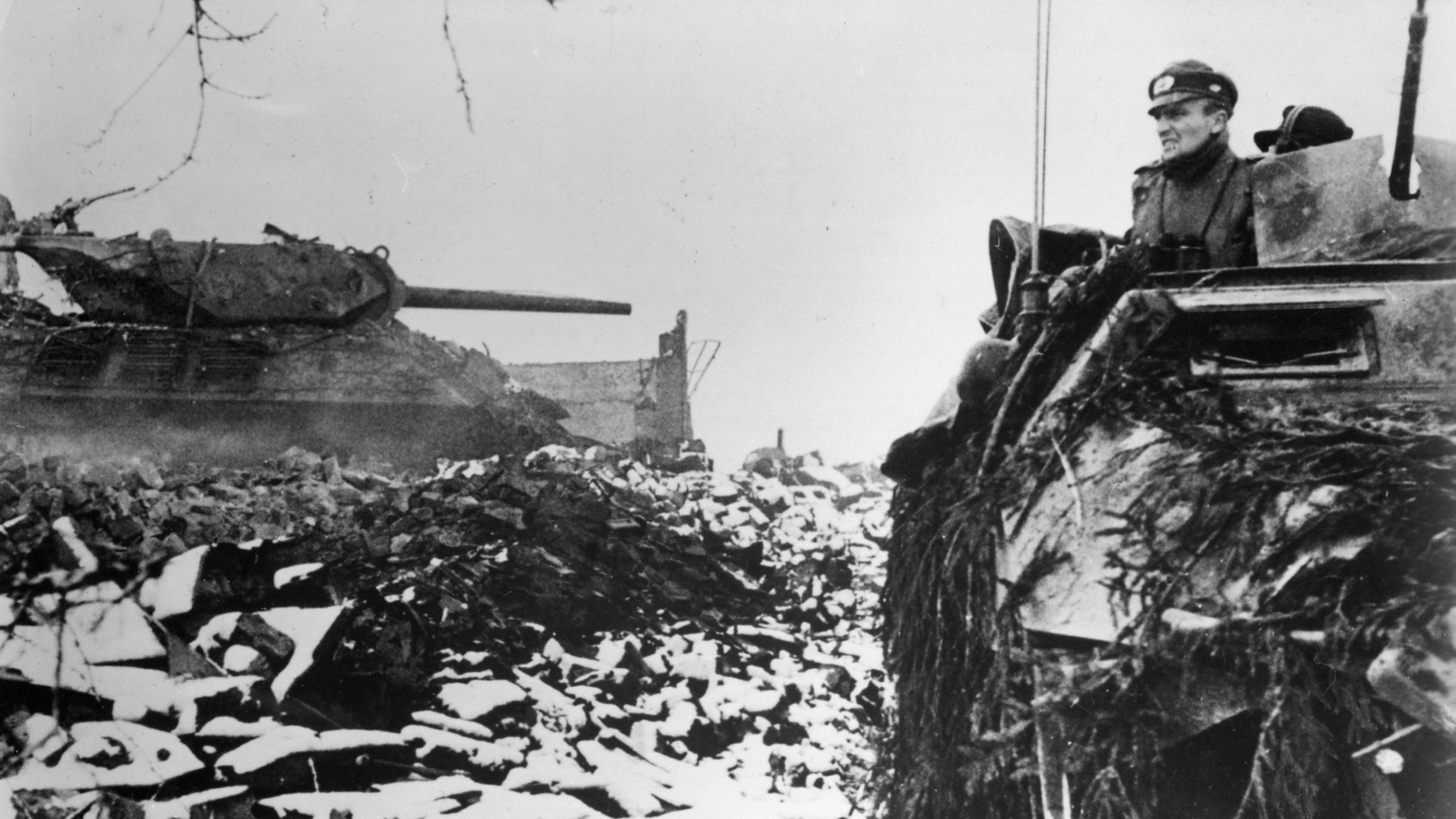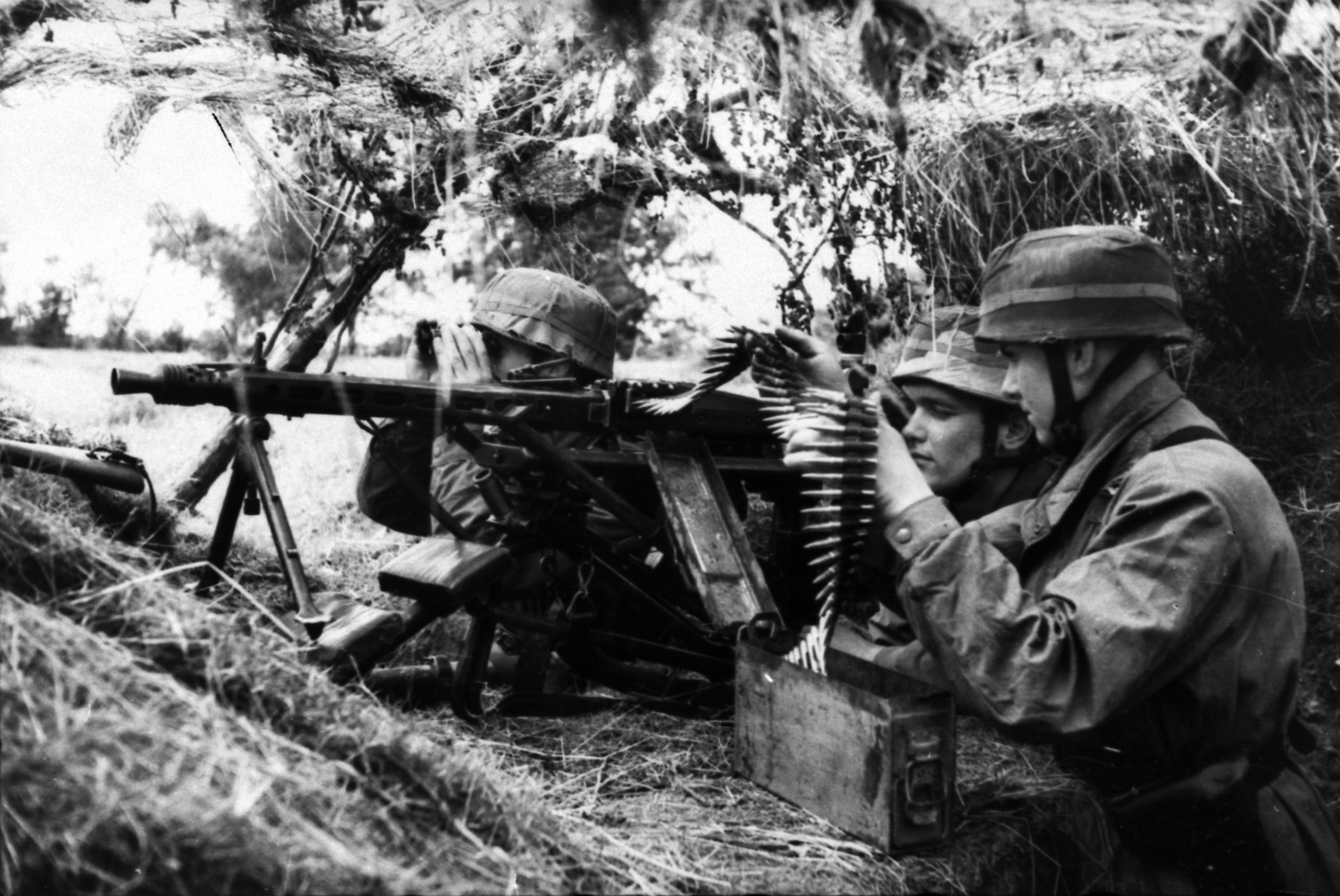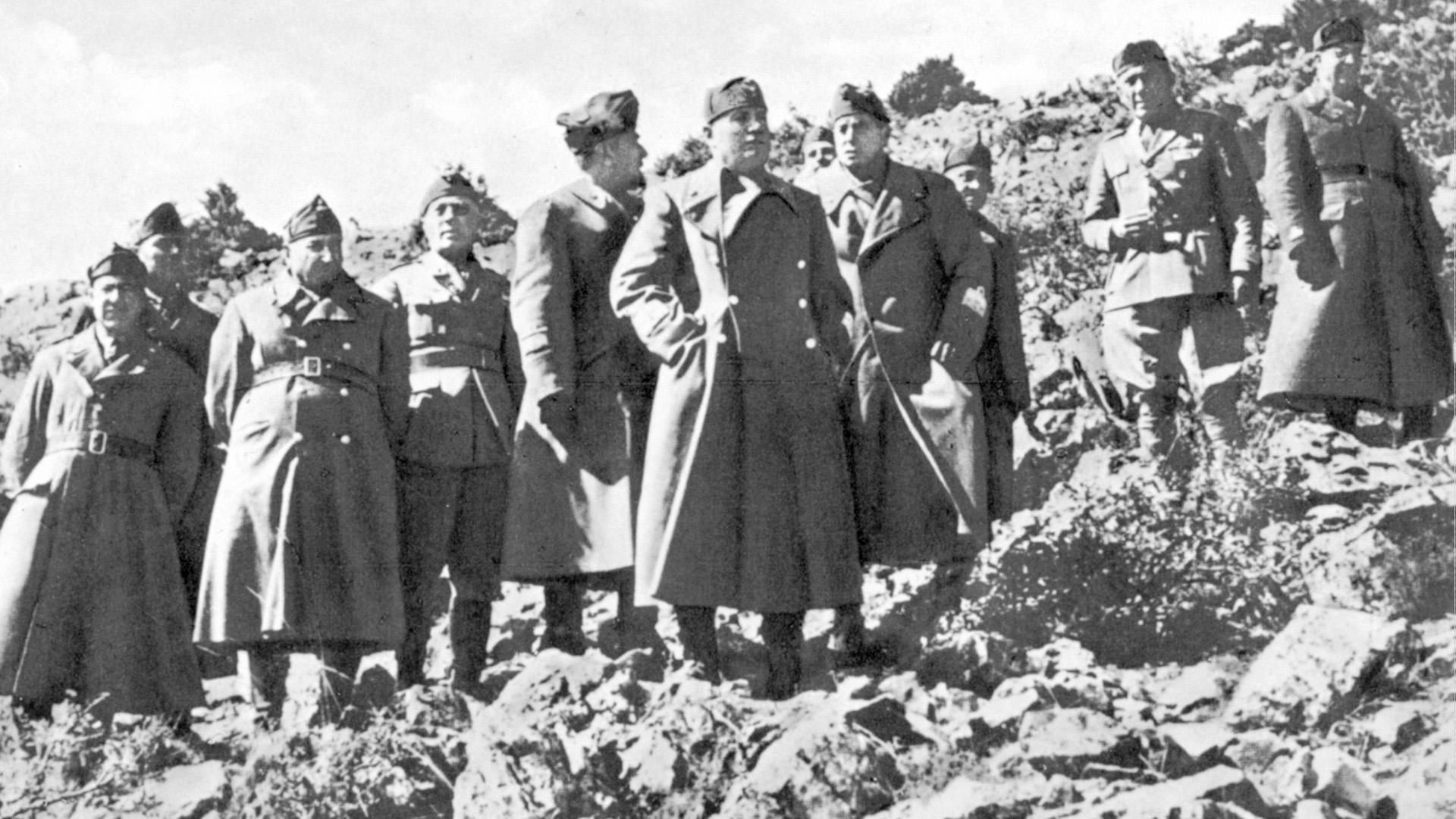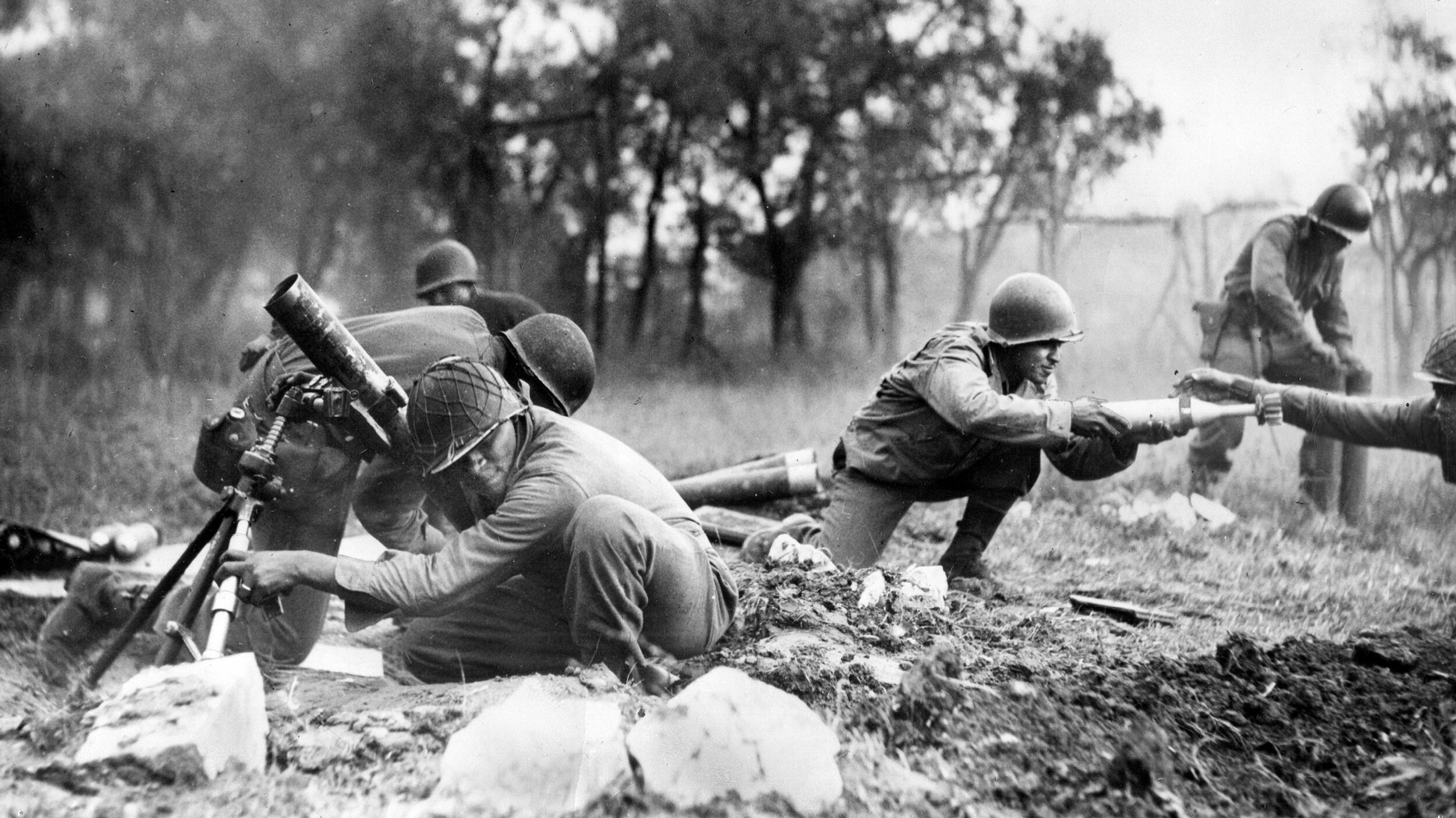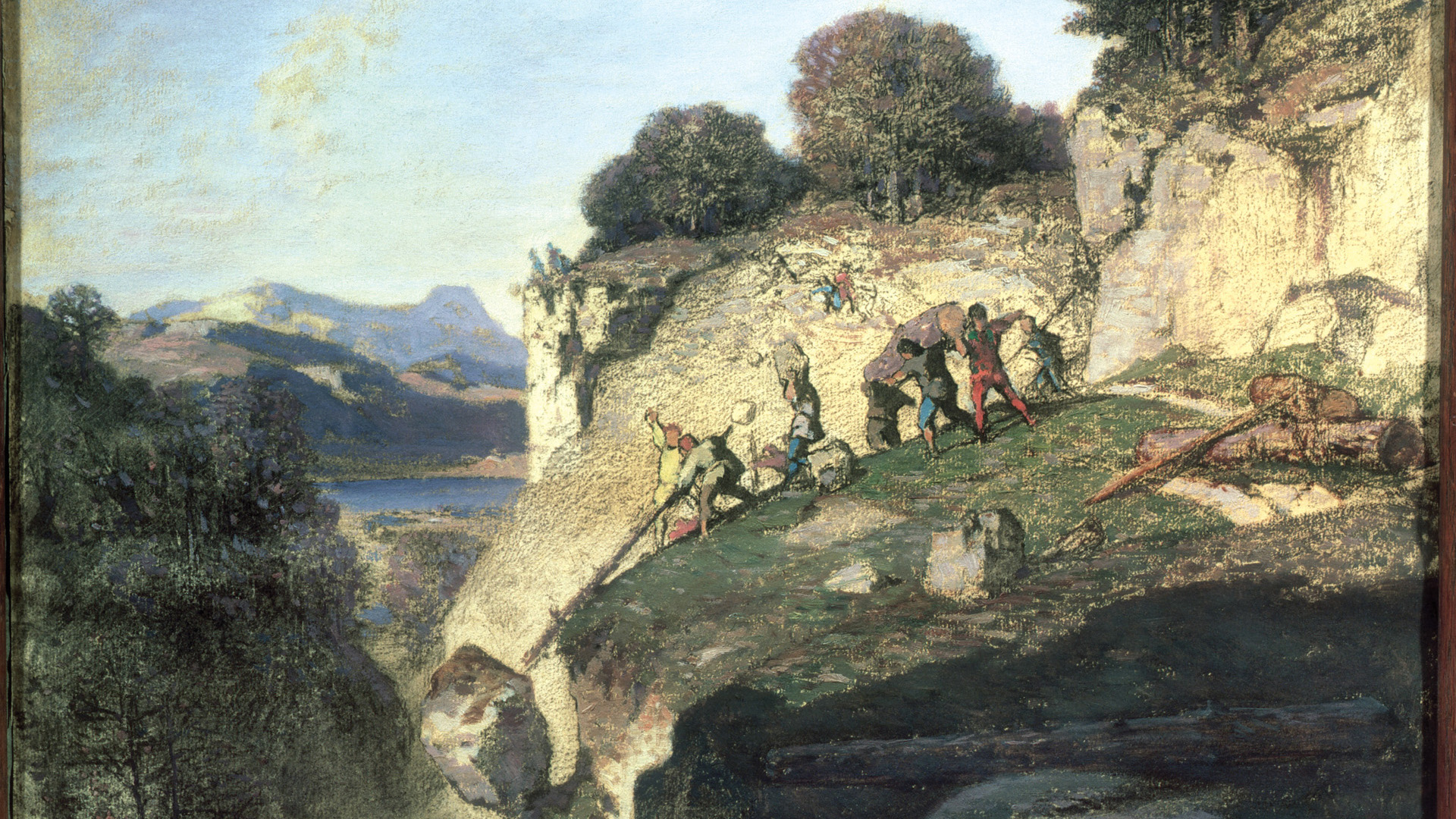By Susan Zimmerman
On December 7, 1941, Japan bombed Pearl Harbor. The next day, the United States declared war on the Empire of Japan, and the following day President Franklin D. Roosevelt told the nation to “prepare to make the sacrifices necessary for the coming fight.” The U.S. government realized that to win this “total war,” women would be needed to serve on the home front to free men to fight on the battlefront. Patriotism was running high, and American women heard the call of duty loud and clear—and answered.
Even before the war—early in 1941—Congresswoman Edith Nourse Rogers of Massachusetts met with the Army’s Chief of Staff, General George C. Marshall, and informed him that she intended to introduce a bill to establish an Army women’s corps, separate and distinct from the existing Army Nurse Corps.
Although Rogers believed that a women’s corps should be a part of the Army so that women could receive equal pay, pension, and disability benefits, the Army did not want to accept women directly into its ranks.
It took over a year of wrangling and compromise before the bill was passed by Congress authorizing the formation of a women-only branch of the Army. The Women’s Army Auxiliary Corps (WAAC) was created on May 15, 1942 (the name was changed on July 3, 1943, to the Women’s Army Corps, or WAC). It was established to work with the Army, “for the purpose of making available to the national defense the knowledge, skill, and special training of the women of the nation.”
Army Chief of Staff General George C. Marshall declared, “Aside from urgent family obligations, enlistment in the military services takes precedence over any other responsibility. I am confident that American women will answer this call to duty.” And answer they did.
Societal morés were changing in the 1940s as women in military uniform became a new norm, although social protocols and gender stereotypes persisted. The day after the WAAC was established, a St. Louis Globe-Democrat article, “Meet the Boss of the Women’s Army Corps,” reported on the WAAC’s first director, Oveta Culp Hobby, who was then chief of the Women’s Interest Section in the Public Relations Bureau at the War Department.
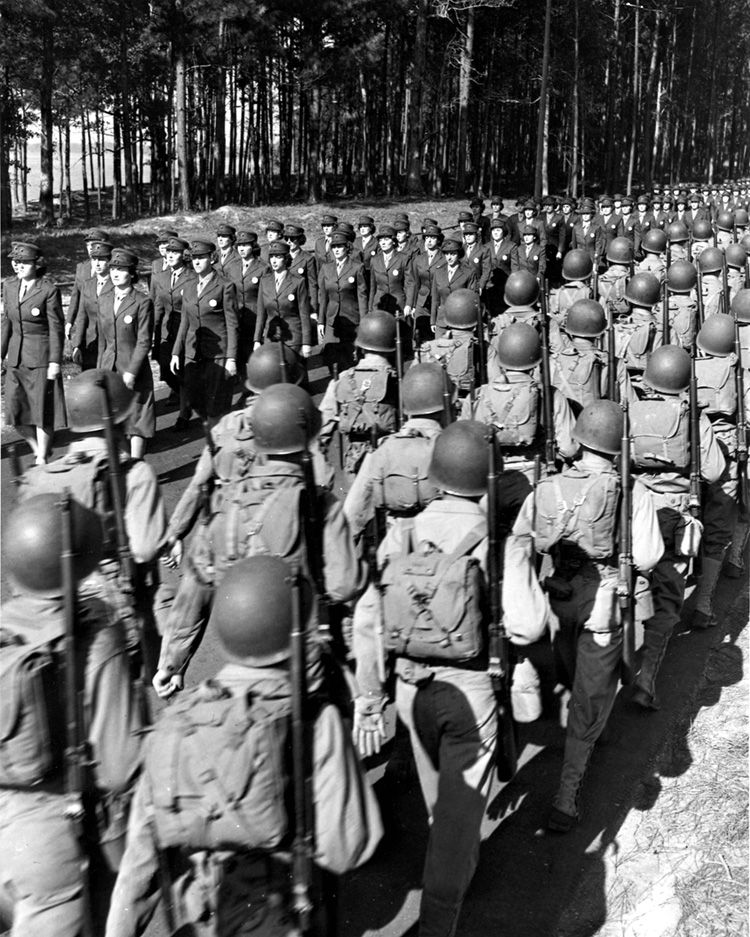
“It takes brains to be a bank director—she is on the board of the Cleburne [Texas] National Bank … but she does like those flower-and-veil creations that prompt men to say, ‘Do you call that a hat?’ She dresses smartly and in good taste. Her dark eyes are especially large and alert. They are accentuated by her dark hair, which is turning gray prematurely. Summer and winter, she somehow manages to have that well-tanned look.”
Enlistments among women grew quickly. By war’s end, the WAC would number over 150,000, with 17,000 women serving in Europe and the Pacific and 2,000 in North Africa. Their assignments were incredibly varied. They worked at airfields as radio operators and spotters, and in ammunition and artillery as crew chiefs and technical workers. They served as drivers and mechanics; telephone and telegraph operators; aerial-photo interpreters and armorers; weather observers and parachute riggers; mail sorters and mechanics; and secretaries and censorers of GIs’ letters. Over 400 worked at the laboratory in Los Alamos, New Mexico, where the first atomic bomb was developed. The list of jobs—everything except combat—was almost endless.
Some of the jobs, for many, were also boring and required long hours, sometimes under dangerous conditions. Strict military restrictions and regulations needed to be followed, and personal freedoms were limited. Some women hated group living or having to dress like everyone else or having their social contacts limited. Many realized that they were being paid less than if they were working in private industry. But it is safe to say that the majority gladly made these personal sacrifices for the good of the country.
In her Center for Military History booklet, The Women’s Army Corps: A Commemoration of World War II Service, Judith A. Bellafaire wrote, “WACs in the Southwest Pacific Area had a highly restricted lifestyle. Fearing incidents between the women and the large number of male troops in the area, some of whom had not seen an American woman for 18 months, the theater headquarters directed that WACs (as well as Army nurses) be locked within barbed-wire compounds at all times, except when escorted by armed guards to work or to some approved recreation. No leaves or passes were allowed.
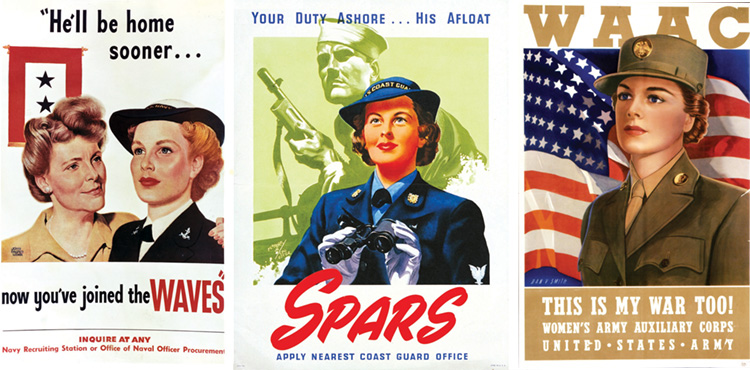
“The women chafed under these restrictions, believing they were being treated like children or criminals. Male soldiers complained frequently in their letters home that WACs were not successfully ‘releasing men for combat’ in the Southwest Pacific because it took so many GIs to guard them. The WACs, in their turn, resented the guards, believing them unnecessary and insulting….
“Ten women received the Soldier’s Medal for heroic actions (not involving combat). One such incident occurred at Port Moresby, New Guinea, when an oil stove in the women’s barracks caught fire and three WACs brought the fire under control by smothering it, sustaining severe burns in the process.
“Sixteen women received the Purple Heart…. The majority of the WACs received their injuries from exploding V-l bombs while stationed in London. The Bronze Star was awarded to 565 women for meritorious service overseas. A total of 657 WACs received medals and citations at the end of the war.”
Although women had served in military conflicts since the American Revolution, World War II was the first time that women had taken part in the United States military in an official capacity. In addition to the WAAC, three other auxiliaries were formed in 1942: Women Accepted for Volunteer Emergency Service (WAVES); the Coast Guard Women’s Reserve (SPAR, taken from the Coast Guard’s motto Semper Paratus and its translation, “Always Ready”); and the Marine Corps Women’s Reserve (WR).
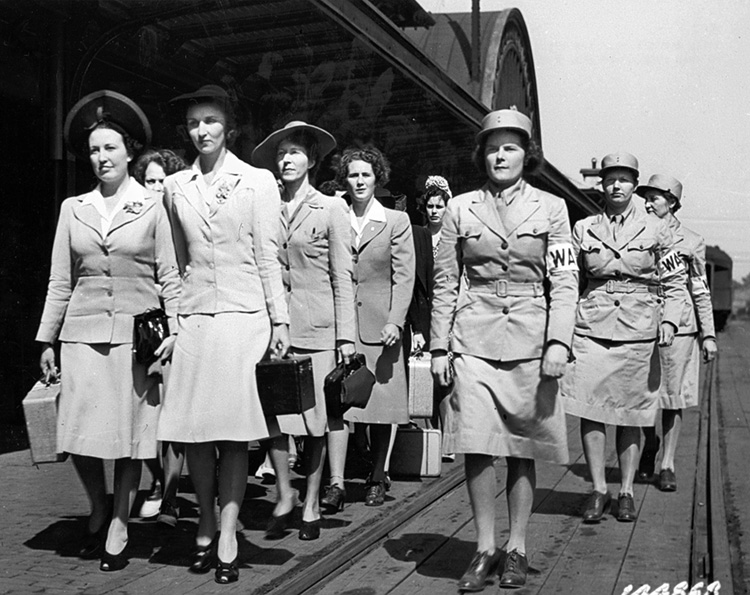
The WAACs, WAVES, SPARs, and WRs weren’t the first women to offer their services to the military—nurses were. One historian noted, “For nearly 100 years before Congress formally established the Navy Nurse Corps in 1908, women worked as nurses aboard Navy ships and in Navy hospitals. As early as the War of 1812, volunteers performed nursing duty in places that were often dangerous and required courage in the face of adversity.”
Only about 1,700 Navy nurses were serving at the start of World War II, but the ranks grew to over 11,000 by 1945. They were stationed at Pearl Harbor, the Philippines, and other U.S. naval bases across the Pacific, and were among the first to treat the wounded sailors during and after the December 7 attack. Nurses were not out of harm’s way; one group of 11 nurses was taken prisoner by the Japanese when the island of Corregidor in the Philippines fell in May 1942 and were subjected to brutal treatment.
Despite the fortitude demonstrated by women, resentments festered, and by May 1943 the “Slander Campaign” took hold (sometimes also called the “Whispering Campaign” or “Rumor Campaign”). “[This] onslaught of gossip, jokes, slander, and obscenity about the WAAC…swept along the Eastern seaboard in the spring of 1943,” according to The Women’s Army Corps by Mattie E. Treadwell, former WAC officer and historian in the Office of the Chief of Military History from 1947 to 1952.
According to Treadwell, the slander reached a critical point on June 8, 1943, “when a nationally syndicated column, ‘Capitol Stuff,’ stated: ‘Contraceptives and prophylactic equipment will be furnished to members of the WAAC, according to a super-secret agreement reached by high-ranking officers of the War Department and the WAAC Chieftain, Mrs. William Petus Hobby.… It was a victory for the New Deal ladies…. Mrs. Roosevelt wants all the young ladies to have the same overseas rights as their brothers and fathers.” Although the Army did indeed provide free prophylactics for men, this was not the case for the women.
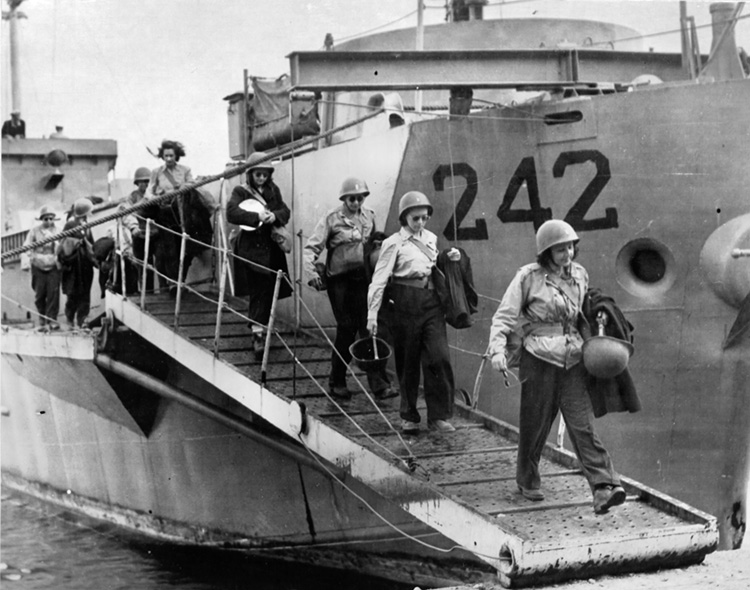
The slander caused some collateral damage, but women pushed ahead, proving their mettle and steadily garnering support on the home front.
Like the WAAC, the women who chose to enlist in the Navy, Coast Guard, and Marines were assigned to a wide variety of jobs. The WAVES’ 84,000 recruits worked in air traffic control, aerial navigation, and communications, while the SPARS’ 11,000 women served as radio operators, ship’s cooks, parachute riggers, and in clerical positions. The WR had some 19,000 women, over half of whom were assigned to clerical positions such as secretaries, stenographers, and telephone and telegraph operators.
The WAVES were not permitted to serve in foreign combat situations, such as on combat ships or aircraft; they were initially only located in the continental U.S. Later in the war some of them served in U.S.-controlled territory and Hawaii, but during World War II no WAVES were sent into harm’s way in other locations. Over the course of the entire war, there were more than 84,000 women who would serve as Navy WAVES, to include 8,000 female officers.
Regardless of their uniforms’ styles, the new recruits were intent on proving themselves. WAC recruit Rachel Leuella Summers McGee of Greensboro, North Carolina, was a teletype operator assigned to the Communications Center at Fort Knox, Kentucky, from 1942 to 1943. In her 1999 interview at the Betty Carter Women Veteran’s Historical Project (WVHP), McGee recalled her basic training in Fort Des Moines: “It was rough being in that 20-below-zero weather [on the drill field]. We were out there marching, and that ground was so slick [with] so much snow, when they would give us ‘to the rear, march,’ we’d fall flat on our face. [That’s] how slick it was. [Because] you had to snap-to, [to turn] around and you’d just fall. It was a sight.
“We were on display all the time because [we] were guinea pigs, but we wanted to show them what we could do. So they put us through everything possible and we endured it!”
When the author spoke with 98-year-old former WAVES Mary Jean Kilpatrick Watts, she clearly remembered, “I was working as a secretary in Fort Wayne, Indiana, and would see the soldiers come and go at a social center in late 1943. Then in ’44 things started to go sour in the Pacific. It was a very critical time, and so I thought about going into the Navy—and I did. I was inducted in May 1944. It was a very intense time of patriotism and worry.”
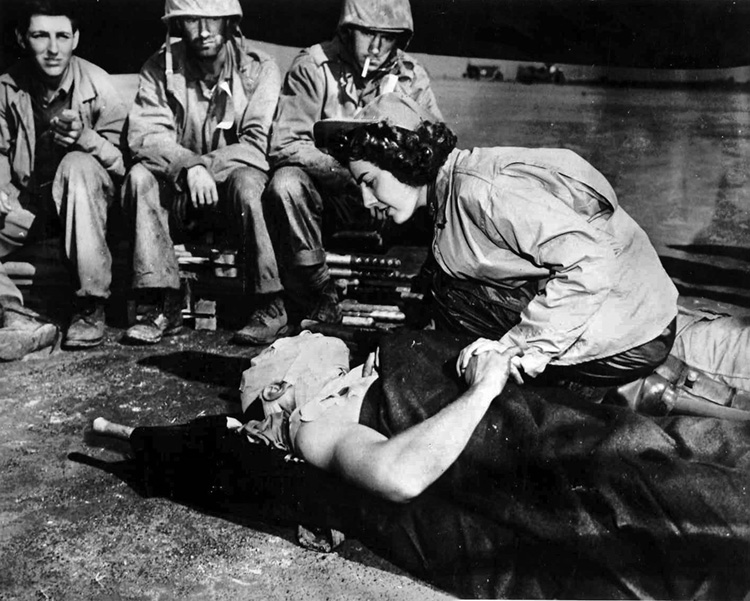
The then-22-year-old from Ohio did her basic training at Hunter College in New York City, which the Navy had taken over, then spent a month at the Naval Air Station in Atlanta, Georgia, where she learned to operate and maintain Link Trainers. More than 500,000 U.S. pilots trained on this “Blue Box” flight simulator, which was vital in preparing pilots for instrument flying. At the U.S. Naval Air Station in Daytona Beach, Florida, Watts operated the Link Trainer, monitoring pilots and recording their flight paths during the simulations.
“We were in the Fighter Direction Unit,” she recalled, “and there were six of us, and there were six of these big instruments. The pilots would come in groups of six for the training; I think many of them went right into battle. We learned how to maintain these funny-looking things and repair them if something broke down, like the wiring. We wore pants because we crawled underneath to fix them.”
Now, some 75 years later, Watts’ memory about answering the call of duty remains strong. “We were losing a lot of people, a lot of men, a lot of ships in the Pacific. It was a pretty serious time. We had many shortages of food, but there was never a lot of complaining; everybody was making a big effort. There was never such patriotism before or since that era.”
The demand for women continued to grow. “I’ve visited Coast Guard stations all over the country in the last five weeks, and the Coast Guard officers are calling for more Spars. They like them, find them efficient,” reported Lt. Cmdr. Dorothy Stratton, director of the women’s reserve of the U.S. Coast Guard, in a September 18, 1943, St. Louis Globe Democrat article headlined, “Spar Enlistments Fluctuate with War, Chief Says Here.”
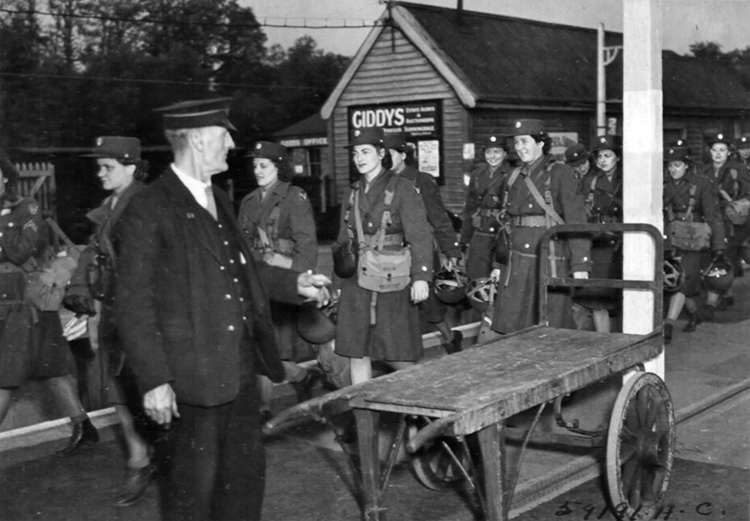
Some five months earlier, on May 23, 1943, the Palm Beach Biltmore Hotel in Florida was ready for action and had already been leased and commissioned as a training station. More than 7,000 new SPARS were processed at the Palm Beach location, where they were trained primarily as yeomen and storekeepers, as well as parachute riggers and air control operators. Others were trained as cooks, bakers, radiomen, radio technicians, and motor vehicle drivers.
Coralee “Coco” Burson Davis from Pasadena, California, served in the Coast Guard SPARS from 1942 to 1946. In a 2001 WVHP interview she recalled: “I went to enlist in the first group of Women Marines and was too early for enlistment. I hadn’t turned 21 yet, and my mother wouldn’t sign the papers, so the Marine Corps said, ‘Try the Navy.’”
But the WAVES had filled their quota, so they told her to try the Coast Guard. She was still too young, so they put her on a list and, when she turned 21, she contacted them and months later was headed to boot camp in February 1943.
After boot camp, she was sent to the Coast Guard headquarters in Washington, D.C., and was put to work in the transportation department typing out vouchers which she described as “deadly dull,” but was able to get reassigned because of her theatrical experience. She eventually ended up auditioning for Tars and Spars, a Coast Guard recruiting show, and was soon on a train headed for rehearsals at the Biltmore Hotel.
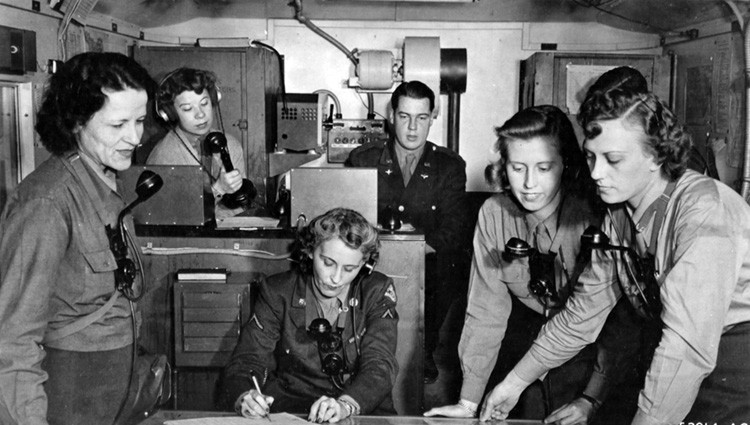
She remembered the most difficult time of her service was going with a friend to Walter Reed Hospital and visiting with the incoming casualties from North Africa. “We would go out and visit the boys in the wards. It really opened our eyes as to the ‘war-is-hell’ saying, because we would write letters to whomever they wanted letters written to, and then the next week we’d go out and they’d be dead, or we didn’t see them again for some reason.”
The all-male Marine Corps, save for the 305 “Marinettes” who served during World War I, was the last branch to accept women. By late 1942, General Thomas Holcomb, Commandant of the Marine Corps, joined ranks with the other branches and put out a call for women enlistees. Holcomb is remembered for his remark, “Like most Marines, when the matter first came up, I didn’t believe women could serve any useful purpose in the Marine Corps … Since then, I’ve changed my mind.”
However, Holcomb stood his ground about giving the Marine Corp Women’s Reserve a catchy acronym (which the other branches had). His legendary comment was reported in a March 1944 issue of Life magazine: “They are Marines. They don’t have a nickname and they don’t need one. They get their basic training in a Marine atmosphere at a Marine post. They inherit the traditions of Marines. They are Marines.” Nonetheless, in practice, they were known as Women Reservists, abbreviated to WRs.
The WR’s first director, Ruth Cheney Streeter, was appointed by Roosevelt in 1943; under her tenure, the reserves grew from approximately 800 to almost 18,000. On the WR’s first anniversary, Roosevelt sent a message: “You have quickly and efficiently taken over scores of different kinds of duties that not long ago were considered strictly masculine assignments, and in doing so, you have freed a large number of well-trained, battle-ready men of the Corps for action.”
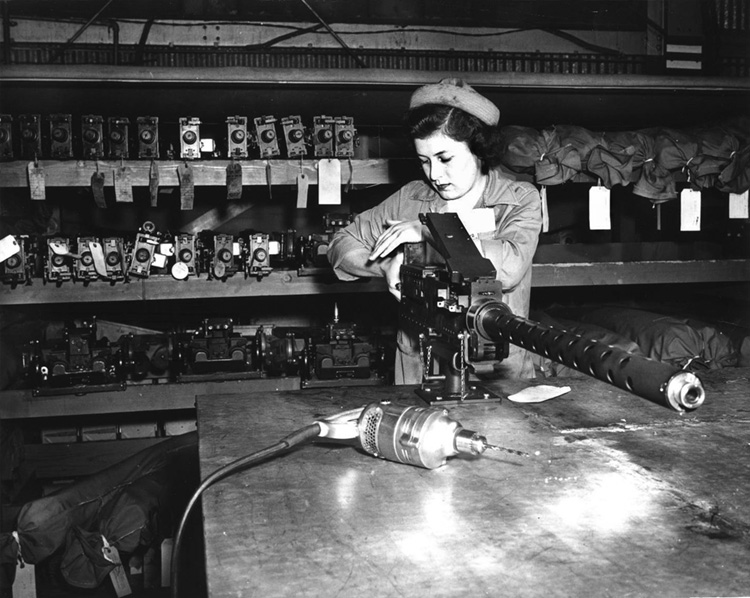
Marine WR Margaret Marian Smith from Anderson, South Carolina, enlisted in her freshman year of college, attended boot camp at Camp Lejeune in North Carolina, and then was sent to Washington, D.C., where she served as an aide to General Alexander Archer Vandegrift, 18th commandant of the U.S. Marine Corps.
In Smith’s 1999 WVHP interview, she recalled: “[WWII] changed everybody’s thinking … almost everybody took a Civil Service exam. That was almost routine in those days.” After graduation, she was appointed to the War Department in Washington in June 1943.
While working in the Pentagon in the Decorations and Awards Branch of the War Department, she decided to enlist in the Marine Corps. Smith recalled, “My parents weren’t too keen at first, but since Mother had been in service, they came across and did sign … I knew there was a great need for replacements, because nearly every woman in service who was assigned to Washington actually released a man who could go overseas.”
The Wasps: Women Who Winged It
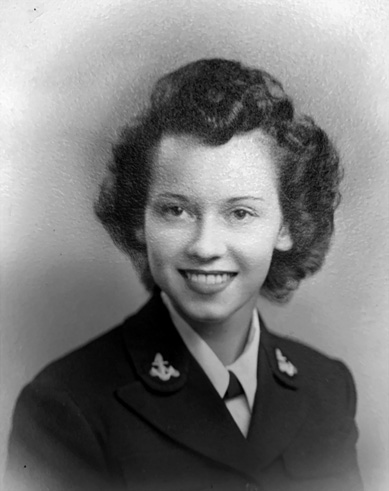
They flew over 60 million miles to 120 bases and transported every type of military aircraft possible. They paid their way to basic training, and their families paid for their funerals when they died in the line of duty. This all-volunteer group of civilian women pilots comprised United States federal civil-service employees and received no military benefits. Officially they were the Women Airforce Service Pilots, but were better known by their nickname: WASP. In just over two years, nearly 1,100 civilian women pilots took to the skies to free a man to fly.
During WWII, male pilots were needed for combat overseas, and the WASPs made it possible by taking over many of their home-front duties—from ferrying planes to transporting cargo. Eleanor Roosevelt, the president’s wife, declared, “We are in a war and we need to fight it with all our ability and every weapon possible. Women pilots are a weapon waiting to be used.”
And used they were. The WASP organization took flight August 5, 1943, by merging the Women’s Flying Training Detachment (WFTD) and the Women’s Auxiliary Ferry Squadron (WAFS), organized in 1942 by aviators Jacqueline “Jackie” Cochran and Nancy Harkness-Love, respectively. Cochran took the helm of the WASP as its first director.
There was a lot of ‘winging it’ when it came to WASP training and duties. Dolores Meurer Reed, from St. Louis, Missouri, served from 1943 to 1944. After her enlistment she reported to Avenger Field in Sweetwater, Texas, where most WASP flight training took place. Following graduation in February 1944, Reed headed to Moore Field, an air base in Mission, Texas, where she piloted planes towing targets for live anti-aircraft practice.
She recalled her experiences in a 2007 WVHP interview: “We had to tow a target about 25 feet long and about five to six feet high, and it was made like chain link…. I’d sit in the plane and then there was a GI who put the target on the plane, and then up we’d go. And we’d have a stretch, like a stretch of rope to fly. So the squadron, six [officers] just about to go overseas for combat, [would use this] for gunnery practice.”
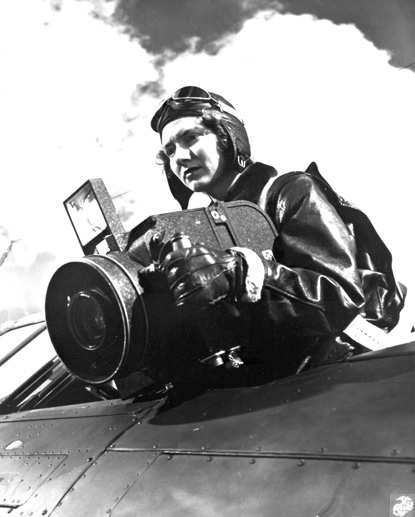
Despite being a moving target, Reed was never afraid (though some WASPs ended up getting shot in the feet) but was worried more about getting cut from the WASP. “I remember my first flight with an Air Force check pilot. He was noted for washing out [recruits]. It’s why they called him [Lieutenant] Maytag, because he was a washing machine.” Reed knew he wasn’t supposed to ask her to do a chandelle (a steep climbing turn executed in an aircraft to gain height while changing the direction of flight), but she did it anyway. When she asked how she’d done, he said, “You’re not going to kill yourself.”
The WASPs were not to be intimidated. On one notable occasion, they outflew the men by taking on the huge B-29 Superfortress, which had a reputation for unpredictability. According to A Few Good Women by Evelyn M. Monahan and Rosemary Neidel-Greenlee, General Henry “Hap” Arnold sent Colonel Paul Tibbets (the pilot who flew the B-29 Enola Gay over Hiroshima) to recruit two WASPs to fly the B-29 and prove to men that anyone could fly the big bomber.
After three days of training, Dora Daugherty Strother and Dorthea Johnson Moorman successfully flew the four-engine bomber. “From that day on, there was no more grumbling from male pilots assigned to fly the B-29,” according to Monahan and Neidel-Grenlee.
Unfortunately, airplane accidents claimed the lives of WASPs, just as they did male pilots. Of the 1,078 WASPs, 38 died in training accidents or while ferrying their planes to their destinations.
The first WASP to die was Cornelia Fort, the daughter of a prominent East Nashville, Tennessee, doctor and a Sarah Lawrence College graduate. She first soloed on April 27, 1940, and received her pilot’s license two months later and her instructor’s rating in March 1941.
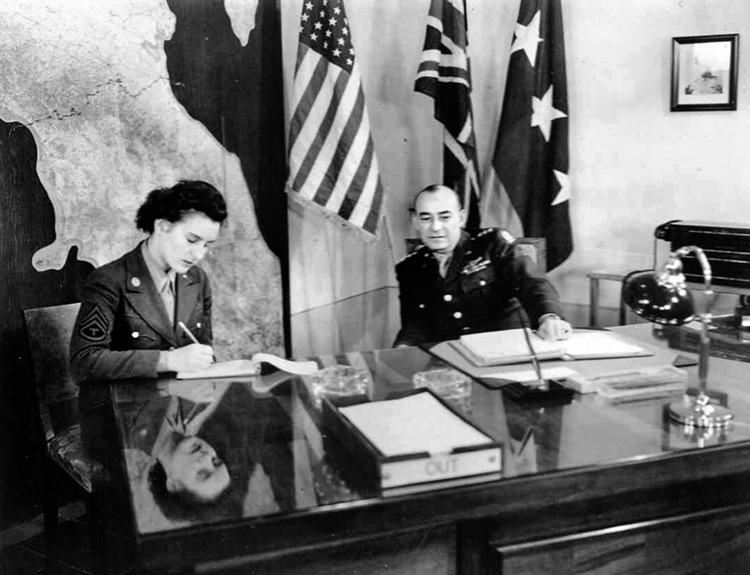
Cornelia was giving a flying lesson over Honolulu, Hawaii, on December 7, 1941, and witnessed the Japanese attack on Pearl Harbor. She and her student narrowly avoided a mid-air collision with a Japanese warplane and survived a strafing attack by a Zero fighter after making an emergency landing at Pearl Harbor. (Her story is briefly dramatized in the 1970 movie, Tora! Tora! Tora!)
Fort was the second woman to join the WASP program and was killed while ferrying a BT-13A on March 21, 1943, when it collided with another plane near Merkel, Texas.
The last WASP to lose her life was 38-year-old Katherine (Kay) M. Applegate Keeler Dussaq of Dayton, Washington, who had been trained as a crime-scene technician and became the nation’s first female handwriting analyst. (Later on she established her own all-woman’s detective agency in Chicago. Her first husband, Leonarde Keeler, was the inventor of the modern polygraph “lie detector” machine.)
Dussaq was killed when the Beechcraft AT-6 she was flying from San Antonio, Texas, crashed on the night of November 26, 1944, near New Carlisle, Ohio, while on her way to Washington, D.C., to try and help stop the disbanding of the WASP organization.
Her last mission went unfulfilled. The final WASP training class graduated on December 7, 1944, with Hap Arnold in attendance. His remarks at the ceremony will be forever remembered: “Frankly, I didn’t know in 1941 whether a slip of a young girl could fight the controls of a B-17 in the heavy weather they would naturally encounter in operational flying.”
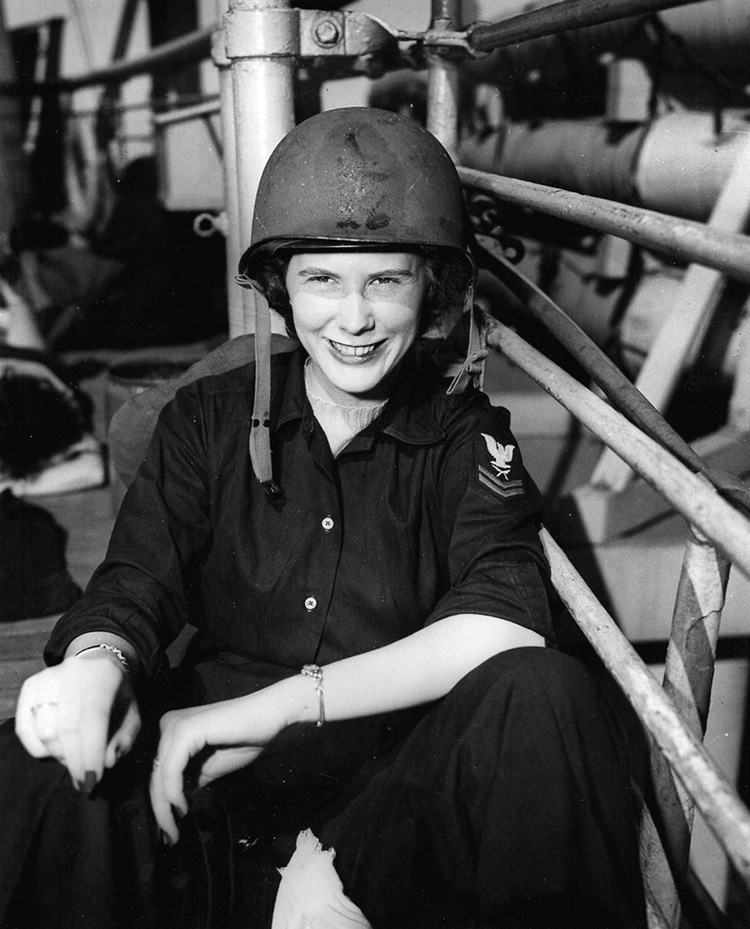
He concluded by saying, “Well, now, in 1944, more than two years since the WASP first started flying with the Air Forces, we can come to only one conclusion…. It is on the record that women can fly as well as men.”
In 1977, Congress granted the surviving WASPs veteran status, and finally the women were treated as well as the men. Dolores Meurer Reed recalled a male tow target pilot at Moore Field once telling her, “‘Oh, I’m so glad you’re here. That’s the most boring job in the world.’ And he went off to combat. And I thought, ‘Well, I did do something good for the war.’”
And she did. The WASPs freed some 900 male pilots for combat duty.
Rampant Discrimination
Just as America was strictly racially segregated before and during the war, the U.S. military reflected that condition. Although widespread employee shortages in the northern war plants brought a major influx of African American workers from the southern states, persons of color still faced discrimination when it came to joining the military.
Women of color, too, had to march a long, hard road to achieve equality because of the U.S. armed services’ long history of racial discrimination. Kathryn Sheldon, former Curator of the Women In Military Service For America Memorial Foundation, Inc. wrote, “In January 1941, the Army opened its Nurse Corps to blacks but established a ceiling of 56. On June 25, 1941, President Roosevelt’s Executive Order 8802 created the Fair Employment Practices Commission, which led the way in eradicating racial discrimination in the defense program.
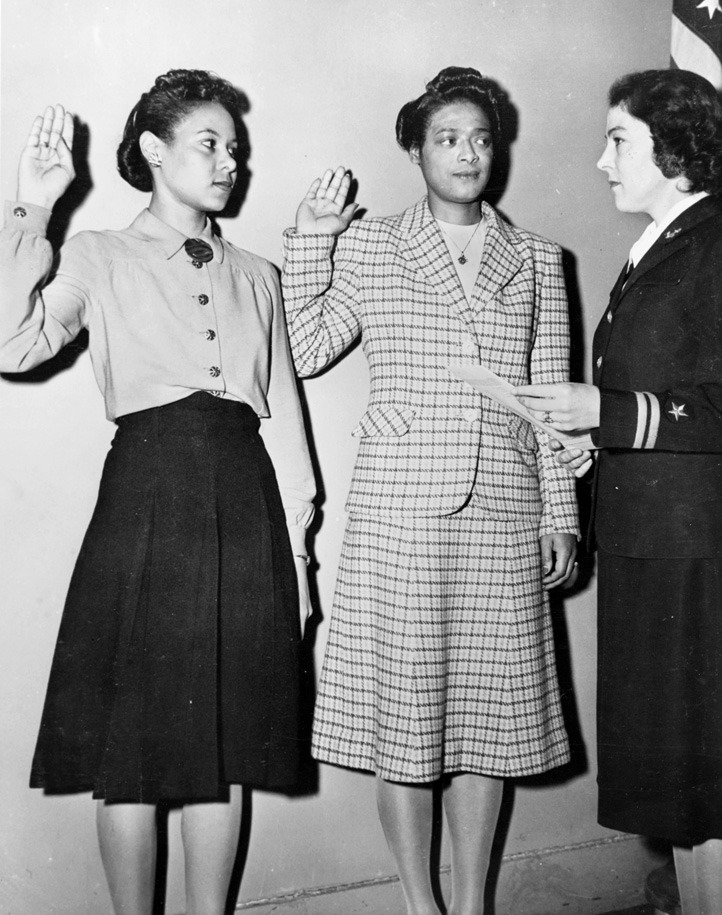
A total of 6,520 black women would serve in the WAAC/WAC during World War II, but as with male Army units, the races were strictly segregated. According to Judith Bellafaire, “Forty black women who entered the first WAAC officer candidate class were placed in a separate platoon. Although they attended classes and mess with the other officer candidates, post facilities such as service clubs, theaters, and beauty shops were segregated. black officer candidates had backgrounds similar to those of white officer candidates. Almost 80 percent had attended college, and the majority had work experience as teachers and office workers.”
The Navy was even worse. It barred black women entirely from joining the WAVES until October 19, 1944, but through the efforts of WAVES Director Mildred H. McAfee Horton and Dr. Mary Jane McLeod Bethune, the latter the daughter of former slaves, Secretary of the Navy Forrestal was finally pressured into admitting blacks.
The first two black WAVES officers, Harriet Ida Pikens and Frances Wills, were sworn in on December 22, 1944, after completing their training at the Naval Women Midshipmen’s School at Smith College. They were both assigned to Hunter Naval Training Station in Bronx, NY, where Pickens led physical training sessions and Wills taught naval history and administered classification tests to WAVES recruits.
Of the 80,000 WAVES in the war, only 72 were black. The Coast Guard’s SPARS also had very few black women in their ranks.
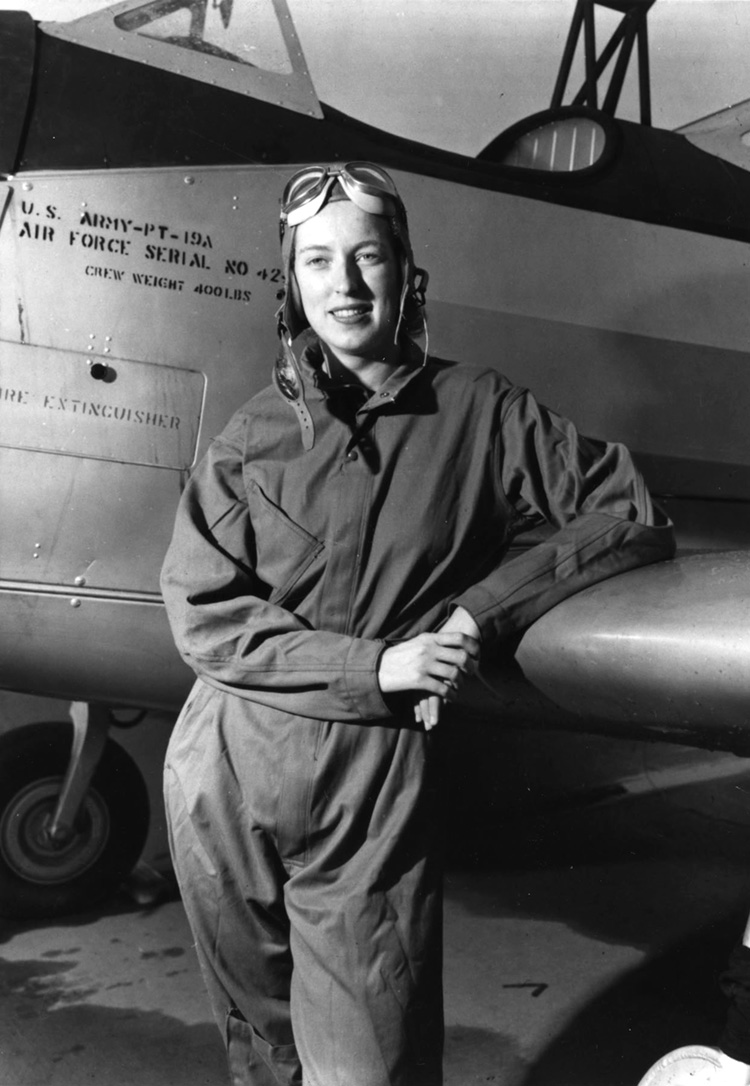
Remembering Those Who Answered
The women who freed men to fight are closing in on a century of living. In the quiet of a nursing home library, the author met with 97-year-old former WAAC Mary Frances Noonan Westermann and her daughter Anne Westermann. According to official records, Westermann was “assigned for 14 months as secretary to General Joseph T. McNarney, Commanding General, Mediterranean Theatre of Operations, at Caserta, Italy. Took minutes of conferences and sent cables. Took care of personal correspondence.”
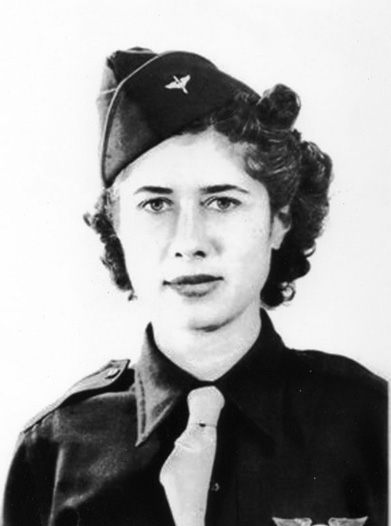
Although some of Westermann’s memories of her almost three years of service (from 1943 to 1946) have faded, she remembered her reason for enlisting without any prompting: “I was young. I wanted adventure. I wanted to feel like I belonged to the times.”
Westermann, who was in the First WAAC Training Center at Fort Des Moines, Iowa, put in a request to go overseas and got the adventure she was seeking. The 21-year-old from St. Louis, Missouri, was sent to Caserta. In her diary she recalled, “Finally orders to ship and I was made Acting 1st Sgt. We all packed up [for the trip over]. The WACs and nurses marched to the train burdened with helmets, musette bags, gas masks, purses, and I with 201 [personnel] files. We felt rugged marching up there with so many GIs in field packs. We felt like real soldiers…. A short ride to Newport News and immediate loading onto the ship, the SS Athos II, a French boat.
“On September 7, 1944, our ship … docked in the bomb-wrecked Naples harbor, early in the morning…. In the harbor were sunken ships and shattered buildings—nothing left but piles of grey stone. Italians came out to our ship in little rowboats, begging for food, cigarettes, clothing, anything. We stood at the rail throwing them oranges, candy, cigarettes, etc…. We are on our way to CASERTA.”
Westermann served in the 2629th WAC Battalion, which was under the command of Major Hortense M. Boutell. Westermann was first in a pool of typists and, when General McNarney needed a fast typist, she was sent because she could do the required 60 words a minute.
There was a large collection of Westermann’s wartime memorabilia spread out on the library table where we met. Many were pictures from McNarney’s meetings at the Allied Forces Headquarters in the Royal Palace of Caserta, near Naples, where Westermann worked.
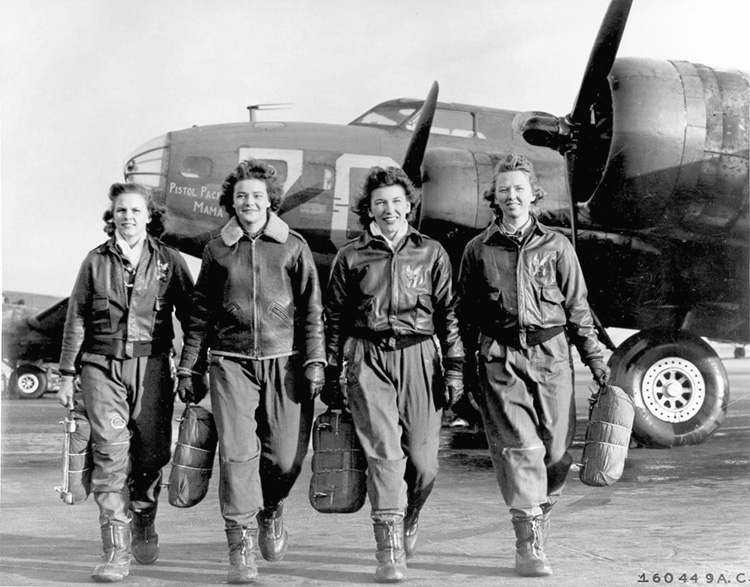
Among the pictures was one of Westermann standing in front of Villa Ciano dated December 1944, which was the home of Count Galeazzo Ciano, Mussolini’s son-in-law and his former foreign minister. There was another of her during her off-duty hours on a trip to the Isle of Capri. Westermann still remembered visiting the Blue Grotto there, where she said the boys went for R&R and recalled: “There was one who was scared to death because he had to go back into combat. It made me sad. I was older than they were. There were like 18 or 19 and we had to be 21.”
(Author’s note: Mary Frances Noonan Westermann passed away November 18, 2019, a month shy of her 98th birthday. The author accompanied her daughter to the nursing home for one last time as Westermann was wheeled away with an American flag draped over her body. The few staff present in the late evening lined the hall to give her a veteran’s salute.)
By war’s end, some 350,000 women had served their country. About 70 percent of their positions were such traditional jobs as typists, clerks, and sorters, which would otherwise have been filled by men. While these trail-blazing women shared a common bond with their male counterparts in serving their country, unlike their male counterparts, who were accepted into military service at “face value,” these women had to overcome long-standing gender constructs.
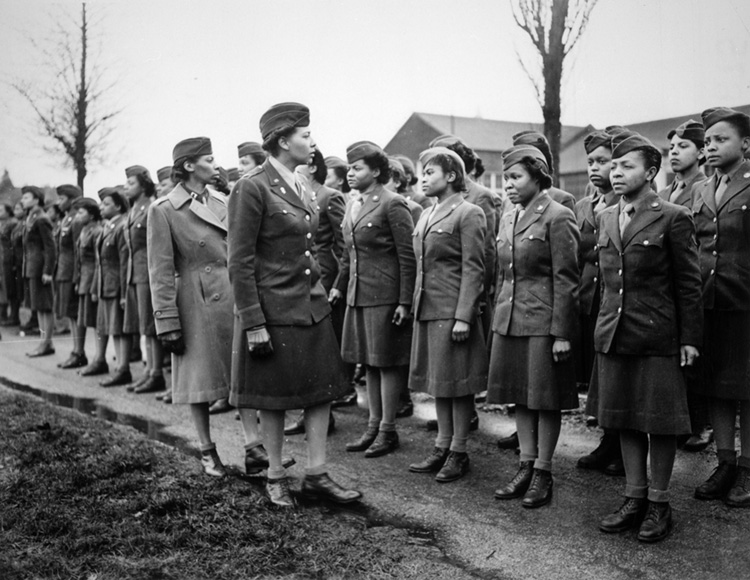
After the war, the separate women’s “corps” were dissolved and women were integrated into the Army, Navy, Air Force, and Marines—full and equal partners to their male counterparts.
The greatest generation of women is passing on. They are proud of their service. Forgetting is not an option.
The Betty Carter Women Veteran’s Historical Project (WVHP), established at The University of North Carolina at Greensboro (UNCG) in 1988, documents the contributions of women in the military and related service organizations since World War I. Oral history excerpts used with permission of the Betty Carter Women Veteran’s Historical Project.
